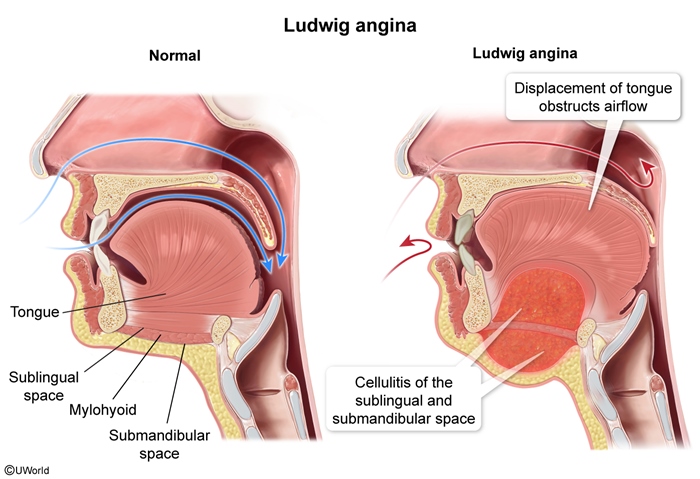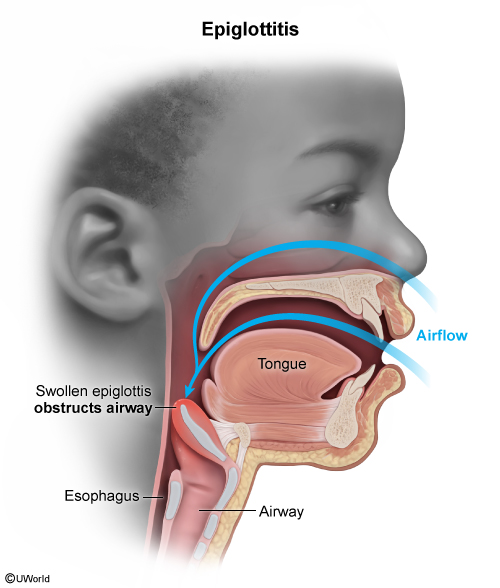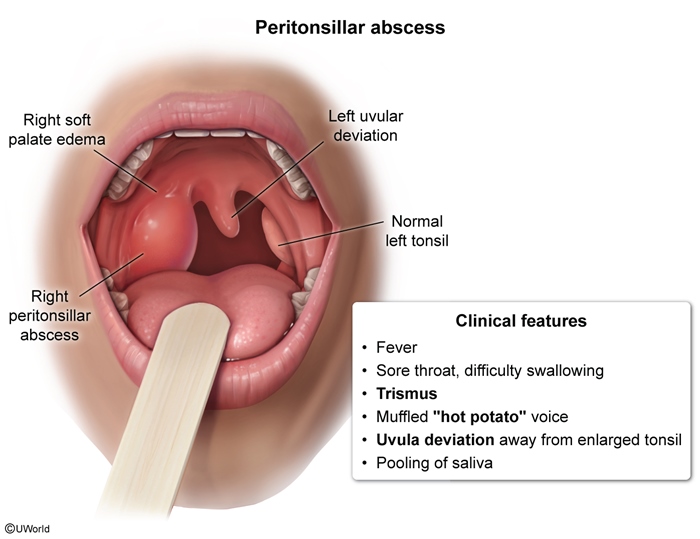Ludwig Angina
Article Sections
Introduction
Ludwig angina (Figure 1) is rapidly progressive cellulitis involving the submandibular, sublingual, and submental spaces that make up the floor of the mouth. Most cases arise from dental infections in the mandibular molars. Symptoms include fever, mouth pain, drooling, dysphagia, and muffled voice. Life-threatening airway obstruction can occur because submandibular edema causes enlargement and elevation of the tongue. CT scan of the neck confirms the diagnosis, and treatment is broad-spectrum antibiotics.
Anatomy
There are 3 potential spaces within the mandibular aspect of the neck:
- Submandibular space: bordered anteriorly and laterally by the mandible, medially by the digastric muscles, inferiorly by the hyoid bone, and superiorly by the mylohyoid muscle
- Sublingual space: located just superior to the submandibular space, between the tongue (superior border) and mylohyoid muscle (inferior border)
Continue Learning with UWorld
Get the full Ludwig Angina article plus rich visuals, real-world cases, and in-depth insights from medical experts, all available through the UWorld Medical Library.
Figures


